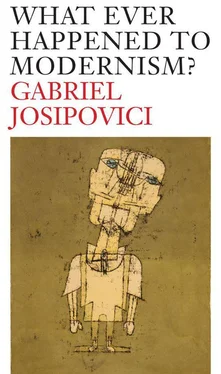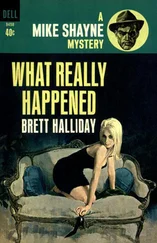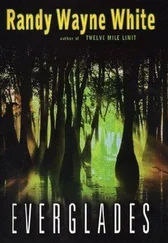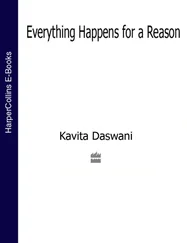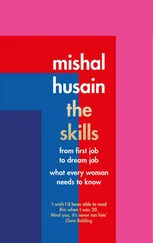Like James, Mallarmé's younger contemporary, Proust, is also concerned to escape from the thinness of the ‘récit’, its sad ‘and then and then and then’ quality, when ‘doing such-and-such’, in P.G. Wodehouse's terms, makes ‘so-and-so happen’. Clearer sighted than James, Proust makes this the central motif of his novel from the very start. The opening meditation on sleep explains it all: a man, asleep, he tells us, is like a bundle of potential, every avenue open to him; even in the moments of going to sleep or waking up he still feels, floating around him, as it were, all the rooms he has inhabited and the women he has slept with. Once awake, however, he has to return to ‘himself’, to putting on ‘his’ clothes, to doing the things ‘he’ has to do that day, and so on. Yet the possible worlds hover like a halo round his head. He understands that his life has inevitably been conditioned, like all lives, by chance encounters, chance events. Swann, acquainted with Marcel's family because they have holiday homes in the same village, leads him to his daughter, Gilberte, and through her to the anguish of love and desire; but he also leads him to Bergotte and Balbec and Elstir and Albertine and all that subsequently unfolds in his life. Our existence is radically contingent. And yet the story of Swann himself, placed by the author near the start of his novel, demonstrates that despite the uniqueness and contingency of each of our lives, there are general laws of existence as well, which make us all behave in similar ways: the story of Swann's love for Odette parallels that of Marcel for Gilberte and then Albertine. At the same time the novel shows how it is possible to react to similar experiences in very different ways, to learn or not to learn from what one goes through. Swann, with that slight coarseness of spirit which characterises him, says Marcel, dismisses his affair with Odette with the remark: ‘To think that I gave up the best years of my life to a woman who was not my type.’ Marcel, on the other hand, more intelligent, more dogged perhaps in his desire to understand, comes to see that suffering and joy are not to be dismissed like that, but form part of the fabric of existence, the exploration of which becomes the theme of his life as a writer. All this makes nonsense of the claim, still sometimes heard, that Proust is merely the exquisite chronicler of the upper echelons of French society in the years leading up to 1914. He is no more that, just as James is no more that for English society, than either of them is like John Galsworthy or Roger Martin du Gard, writers who imagine that quality lies in the length of a work and in the number of generations it deals with. For both Proust and James, despite the length of their novels, the Mallarméan description holds good: ‘Tout se passe, par raccourci, en hypothèse; on évite le récit.’ And the work of both conforms to Bacon's recipe for a successful picture: ‘It lives on its own, like the image one's trying to trap.’
7. A Universe for the First Time Bereft of All Signposts
‘This poem’, Tolstoy wrote in
What is Art?
about Mallarmé's ‘A la nue accablante tu’, ‘is not exceptional in its incomprehensibility. I have read several other poems by Mallarmé and they also had no meaning whatever.’ Tolstoy was not alone in his suspicions, but neither was Mallarmé alone in being the subject of general incomprehension. In his early, rather romantic memoir-cum-meditation,
La Corde raide
, Claude Simon, who himself started out as an artist, describes a taciturn, friendless, obsessive painter, who also like himself had been born and bred in the South, returning day after day to the same spot, tramping over mountain and quarry, endlessly repeating the same motif, never satisfied, never stopping, his whole existence funnelled into the walk out to the mountain, and then the struggle to relate what he sees to what appears on his canvas until the light fades and he has to pack up his things and tramp home, unappeased, ready to start again the next day.
What is it that so obsesses him? That takes him from his family and friends into the same unyielding arena, day after day, with nothing but the mountain, the quarry, the trees and the sky, and that canvas rectangle on which he leaves his marks? Why is it that the paintings left by this man satisfy him, Simon, in a way no other artwork has ever done? Is it that while other paintings tell a story these seem to be alive? Is it the sense that everything on that canvas rectangle relates to everything else? That while never relinquishing the motif, Mont Saint-Victoire, the quarry at Bibémus, he reaches the point where, on his canvas, background and foreground cease to function as such and are replaced by a reticulation of painterly gestures with no slackness, no coasting, in any area? Talking later, Simon was to make just this point. Cézanne's mature work, he says, is characterised by a ‘refus de valorisation sélective’, a refusal to think of one element as more important than another: ‘In his work the attention of the spectator is solicited by the whole surface’, he says, ‘and not only certain privileged spots or objects or people.’
Merleau-Ponty has unpacked for us what traditional landscape painting before Cézanne consisted of. When a painter is confronted by a landscape, he writes,
he chooses to depict on his canvas an entirely conventional representation of what he sees. He sees a tree nearby, then he directs his gaze further into the distance, to the road, before finally looking to the horizon; the apparent dimensions of the other objects change each time he stares at a different point. On the canvas, he arranges things such that what he represents is no more than a compromise between these various different visual impressions: he strives to find a common denominator to all these perceptions by rendering each object not with the size, colours, and aspect it presents when the painter fixes it in his gaze, but rather with the conventional size and aspect that it would present in a gaze directed at a particular vanishing point on the horizon, a point in relation to which the landscape is then arranged along lines running from the painter to the horizon. Landscapes painted in this way have a peaceful look, an air of respectful decency, which comes of their being held beneath a gaze fixed at infinity. They remain at a distance and do not involve the viewer. They are polite company: the gaze passes without hindrance over a landscape which offers no resistance to this supremely easy movement.
It's amazing how close this description of traditional landscape — the pleasures it offers and the simplifications and distortions that entails — is to Barthes' description, quoted earlier, of the use of the passé simple in the traditional novel. And, as with the classic novel, this is not meant as an indictment of a whole tradition — we have seen Friedrich working very differently with landscape — but simply as a means of making us aware of the fact that what at first seems natural is actually highly artificial and constructed (one could make the same sort of analysis of the role of the key-system that underlies classical music). And, as Kierkegaard and Proust and Sartre noted with classic narrative, so here. ‘This is not how the world appears when we encounter it in perception’, Merleau-Ponty goes on:
When our gaze travels over what lies before us, at every moment we are forced to adopt a certain point of view and these successive snapshots of any given area of the landscape cannot be superimposed one upon the other. It is only by interrupting the normal process of seeing that the painter succeeds in mastering the series of visual impressions and extracting a single unchanging landscape from them … by subjecting all such details to this analytical vision he fashions on the canvas a representation of the landscape which does not correspond to any of the free visual impressions. This controls the movement of their unfolding yet also kills their trembling life.
Читать дальше
